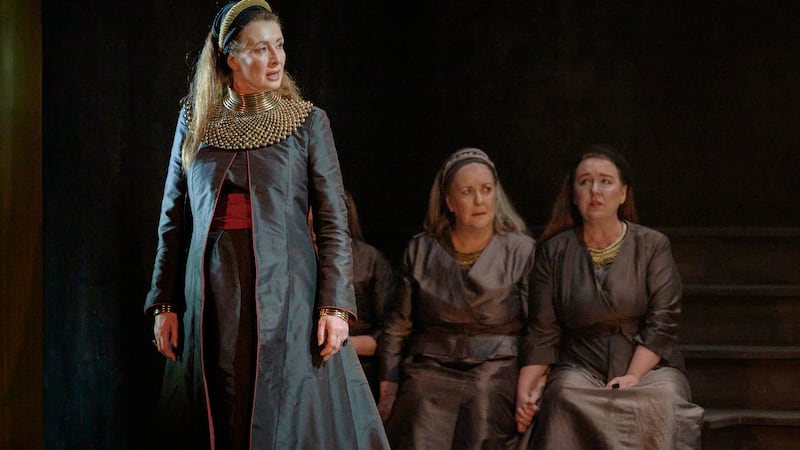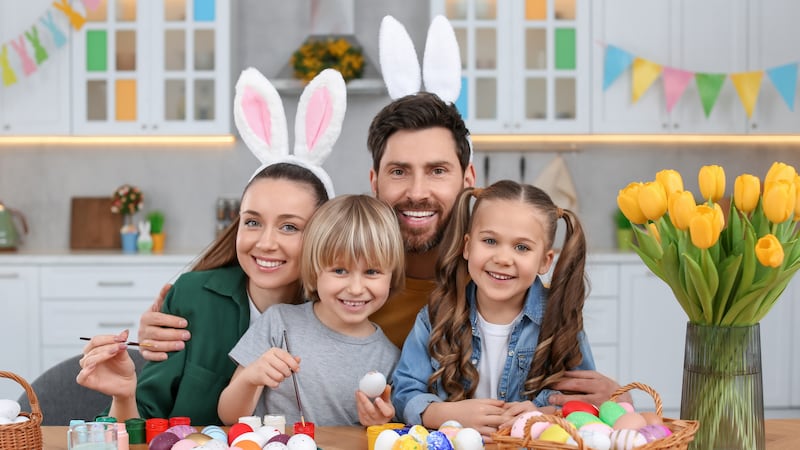Go mbeannaí Dia daoibh arís chuig The Bluffer’s Guide to Irish, Tower of Babel edition.
The Bluffer has had a lifetime of pleasure knowing the Irish language, from the friends he has made to the work he does and from trips to the Gaeltacht and the whole of Gaelic culture from sean-nós singing to the new rap band IMLÉ. Yep, you can even rap in Irish.
The cultural caboodle includes music, literature, comedy and drama all done through the medium of Irish.
And that is what the Bluffer loves about all languages, the sheer multitude of pleasures they can give you once you’ve mastered one or more.
Now, there is a little list of words you’ll need to know. Learn them off by heart and then I’ll tell you why.
Here goes: agam - at me, agat - at you, aige - at him, aici - at her, againn - at us, agaibh - at you and acu - at them.
Okay? They are some of the most frequently used words in Irish and we got a hint of them last week too.
Teanga is the Irish for a language, and yes, it is also the language for a tongue, the thing the doctor asks you to stick out when he wants to see if you have Scarlet Fever or not.
So how do you ask
someone if they speak a particular language?
An bhfuil Gaeilge agat? - Can you speak/do you know Irish or literally, Is Irish at you?
You can answer tá Gaeilge agam - I can speak Irish or níl Gaeilge agam - I can’t speak Irish.
But what about if you have a wee bit of Irish. You could say tá beagán Gaeilge agam - I have a little Irish or níl mórán Gaeilge agam - I don’t have a lot of Irish or even tá cúpla focal agam - I have a few words.
So you see why those little at-words are important, you need them to say that you have something and that includes languages.
Tá Snickers agam - I have a Snickers and this can refer to any kind of confectionery - the Bluffer has a particular liking for Curly Wurlys but that’s a story for another day.
If you want to say you have something, it is just tá (whatever it is) agam.
As for languages, you could ask cá mhéad teanga atá aige? how many languages does he have/speak?
Tá Fraincis, Spáinnis agus Rúisis aige - he speaks French, Spanish
and Russian.
Or if you are a bit of a show-off, you could impress certain people with tá mé líofa sa Ghearmáinis - I am fluent in German.
Now when you go abroad, you will find that many people speak more than one language and Béarla - English is usually one of them however, you can bump into Gaeilgeoirí anywhere in the world.
The Bluffer speaks Irish to his companions wherever he goes so the language has been heard in Beijing, Buenos Aires, Bangkok and even in Ballynahinch.
“The limits of my language are the limits of my world,” Wittgenstein said. Even at intermediate level in Spanish, the Bluffer can read about the peace process in Colombia, something he is very interested in by reading Colombian newspapers on line.
Another language broadens the limits of your world.
Cúpla focal
agam(ugum) - at me,
agat(ugut) at you aige(aiyge) - at him aici(ackee) - at her againn(ageen) - at us
agaibh(agiv) - at you
acu(acoo) - at them
teanga(changa) - a language
An bhfuil Gaeilge agat? (un wil gaylick ugut) - Can you speak Irish
tá Gaeilge agam(taa gaylick ugum) - I can speak Irish
níl Gaeilge agam(neel gaylick ugum) - I can’t speak Irish.
tá beagán Gaeilge agam (taa bigaan gaylick ugum) - I have a little Irish
níl mórán Gaeilge agam (neel moraan gaylicka ugum) - I don’t have a lot of Irish
tá cúpla focal agam(taa fawkle ugum) - I have a few words
Tá Snickers agam(taa snickers ugum) - I have a Snickers
Cá mhéad teanga atá aige?(caa vayd changa ata iyge) - how many languages does he have/speak?
Tá Fraincis, Spáinnis agus Rúisis aige(taa frankish spaanish agiss rooshish iyge) - he speaks French, Spanish and Russian
tá mé líofa sa Ghearmáinis (taa my leefa sa yaramaanish) - I am fluent in German
Béarla(bayrla) - English

